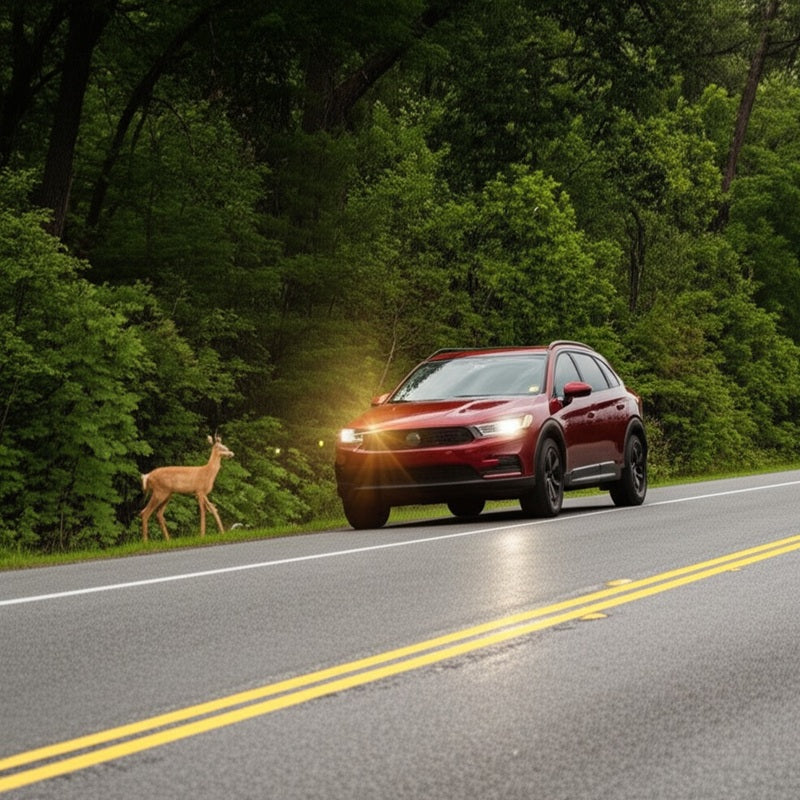Have you ever seen those cool thermal camera videos? Things glow in bright colors. People show up as hot blobs, and it looks like magic. It lets you see in total darkness. This technology is called infrared imaging. But is it perfect? Can it see everything? This leads us to a fascinating question: Which creatures are masters of thermal camouflage?
The short answer is cold-blooded animals, but the full story is much more interesting. Let's break it down in simple terms.
How Do Thermal Cameras Work?
First, we need to understand how thermal cameras work. Everything around us gives off heat. This heat is a form of energy called infrared radiation. Our eyes cannot see it. But special cameras can. They translate this heat into a visible image. Hotter objects, like mammals, appear bright white, yellow, or red. Colder objects, like rocks or trees, appear blue or purple.
So, why would any animal be invisible to this? It all comes down to body temperature regulation. This is the key to unlocking the puzzle of what animal cannot be detected by infrared.
Mammals and birds are "warm-blooded." Their bodies make their own heat. They keep a constant internal temperature. A human is usually around 98.6°F (37°C). A dog is similar. This is much warmer than a cool night. So, they stand out clearly on a thermal scanner. They are easy to spot.
The Masters of Infrared Stealth
Now, let's talk about the masters of infrared stealth. These are the animals that are hard to find. So, what animal cannot be detected by infrared? The crown goes to reptiles and amphibians.
Think about snakes, lizards, frogs, and alligators. They are "cold-blooded." This doesn't mean their blood is always cold. It means they don't generate their own body heat. They rely on the sun and their environment to warm up. Their body temperature changes with the temperature outside.
This is a superpower when it comes to avoiding thermal detection. Imagine a snake sitting on a sun-warmed rock during the day. The rock is hot. The snake is also hot. A thermal camera would see one big hot blob. You wouldn't be able to tell the snake apart from the rock.

Now, imagine that same snake at night. The air has cooled down. The rock has cooled down. The snake's body has also cooled down. Its temperature is now almost exactly the same as the rock and the surrounding ground. It has become one with its environment. To a thermal camera, there is no heat signature to detect. It becomes practically invisible.
This is the ultimate answer to "what animal cannot be detected by infrared." It's not that they are completely invisible 100% of the time. But they can blend in perfectly with their thermal background. This makes them incredibly difficult to see.
It's a brilliant survival tactic. Many predators, like some snakes, use heat vision to hunt. Their prey has evolved to hide from it. It’s a constant arms race in nature.
Other Creatures with Thermal Camouflage
Are there any other animals that are tricky? Some insects and fish can also be hard to detect. Their small size and aquatic environment play a role. But reptiles are the classic example. They are the champions of thermal camouflage.
Real-World Implications
This might sound like a fun science fact. But it has very real implications. Think about driving on a dark country road. Deer and raccoons are warm-blooded. They show up well on thermal devices. But what about a large turtle crossing the road? Or a snake basking on the warm asphalt at dusk? These are real risks. They are much harder to see with standard night vision.

This brings us to modern technology. How do we solve this problem? How do we stay safe when nature has animals that cannot be detected by infrared?
This is where advanced thermal cameras with artificial intelligence (AI) come in. These systems no longer rely solely on heat signatures but use a combination of powerful sensors and smart software to identify objects based on their shape, size, and movement. The best systems no longer rely solely on heat. They use a combination of powerful sensors and smart software.
A prime example of this advanced technology is the Robofinity thermal night vision camera for cars. It uses a high-resolution thermal sensor to see heat. This is great for spotting people, deer, and other warm objects far away. It works in total darkness. It cuts through rain, snow, and fog.

But it also has a powerful AI brain. This AI is trained to recognize shapes and patterns. It doesn't just look for a blob of heat. It looks for the specific shape of a person, a car, or an animal. This is a huge advantage.
The Solution: AI-Powered Thermal Imaging
Robofinity thermal car camera can see up to 200 meters ahead. That gives you precious seconds to react. It gives you an audible and visual alert before a potential collision. The installation is simple and quick. It’s designed for any driver who values safety.
Conclusion:
So, while it's true that certain animals cannot be detected by infrared alone, technology has found a way. By combining thermal imaging with AI, we can overcome nature's stealth tricks. This makes our roads safer for everyone, and for all creatures, warm or cold.




Hinterlasse einen Kommentar
Alle Kommentare werden vor der Veröffentlichung geprüft.
Diese Website ist durch hCaptcha geschützt und es gelten die allgemeinen Geschäftsbedingungen und Datenschutzbestimmungen von hCaptcha.